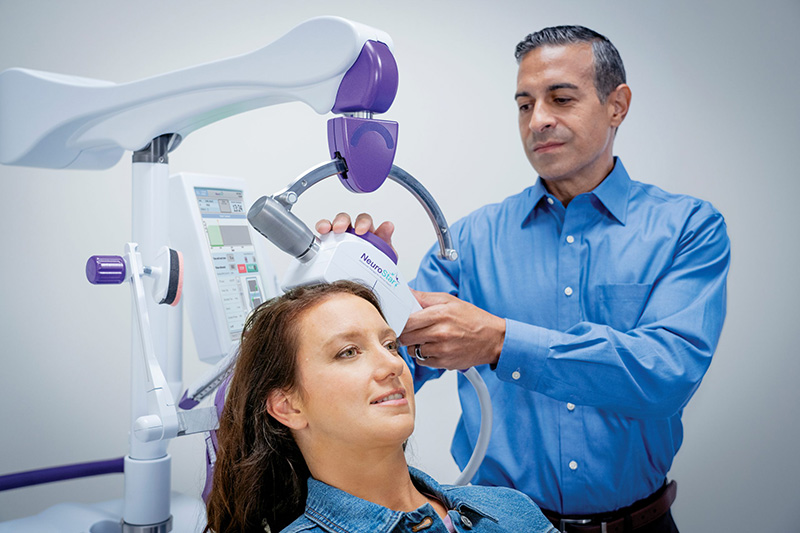About NeuroStar® TMS Therapy
NeuroStar uses transcranial magnetic stimulation (TMS). to target key areas of the brain that are underactive in people with depression. It is not ECT (electroconvulsive therapy).
The leading scientific theory is that depression is caused by an imbalance of the brain’s neurotransmitters. Neurotransmitters are the chemical messengers that send signals between brain cells.
What is NeuroStar Advanced Therapy (TMS)?
NeuroStar treatments utilize a magnet similar in strength to that used in a MRI machine. The magnet stimulates nerve cells in the area of the brain thought to control mood. These magnetic pulses often have a positive effect on the brain’s neurotransmitter levels, making long-term remission possible.

Treatment with NeuroStar Advanced Therapy is easy:
- Therapy sessions are conducted in your NeuroStar doctor’s office
- You can return to normal activities right away
- You are awake during treatment
- There are no negative effects on memory or sleep
- It’s covered by most health insurance plans, including Medicare and Tricare
There is a new hope for achieving remission! More than three million treatments of NeuroStar Advanced Therapy have been delivered.
Todd's NeuroStar® TMS Therapy Story
Hear how Todd got his life back after finding NeuroStar Advanced TMS for depression.
Treatment with NeuroStar® Advanced Therapy
Here is what our patients can expect from a NeuroStar Advanced Therapy (TMS) session:
Before Treatment
You’ll recline comfortably in the treatment chair. A small, curved magnetic coil will be positioned lightly on your head.
During Treatment
NeuroStar delivers focused magnetic stimulation directly to the target areas of the brain. You’ll hear a clicking sound and feel a tapping sensation on your head.
After Treatment
You can resume normal activities immediately. Because there are no effects on alertness or memory, you can drive yourself to and from treatment sessions.
In-office treatment with NeuroStar TMS Therapy typically takes 19-37 minutes and is administered 5 days a week for approximately 4-6 weeks.*
Randi's NeuroStar® TMS Therapy Story
Randi was diagnosed with depression in high school. NeuroStar gave her her life back. Hear her journey to heal her depression and how it has transformed her life.
Non-Depressed & Depressed Brain PET Scan

A PET scan measures vital functions such as blood flow, oxygen use and blood sugar (glucose) metabolism.
(Source:Mark George, MD Biological Psychiatry Branch Division of Intramural Research Programs, NIMH 1993)
Ready to find out if NeuroStar Advanced Therapy is right for you?
Click the link below and fill out our TMS questionnaire!
NeuroStar Frequently Asked Questions
Clinical Trials & Academic Studies
- Carpenter LL, et al. (2012). Transcranial Magnetic Stimulation (TMS) for Major Depression: A Multisite, Naturalistic, Observational Study of Acute Treatment Outcomes in Clinical Practice. Depression and Anxiety, 29(7):587-596. www.ncbi.nlm.nih.gov/pubmed/22689344
- George MS, et al. (2010). Daily Left Prefrontal Transcranial Magnetic Stimulation Therapy for Major Depressive Disorder: A Sham-Controlled Randomized Trial. Arch Gen Psychiatry, 67(5):507-516. www.ncbi.nlm.nih.gov/pubmed/20439832
- Dunner DL, et al. (2014). A Multisite, Naturalistic, Observational Study of Transcra- nial Magnetic Stimulation (TMS) for Patients with Pharmacoresistant Major Depres- sive Disorder: Durability of Benefit Over a 1-Year Follow-Up Period. J Clin Psychiatry. 75(12):1394-1401. www.ncbi.nlm.nih.gov/pubmed/25271871
- O’Reardon JP, et al. (2007). Efficacy and Safety of Transcranial Magnetic Stimulation in the Acute Treatment of Major Depression: A Multisite Randomized Controlled Trial. Biol Psychiatry, 62(11):1208-1216. www.ncbi.nlm.nih.gov/pubmed/17573044

